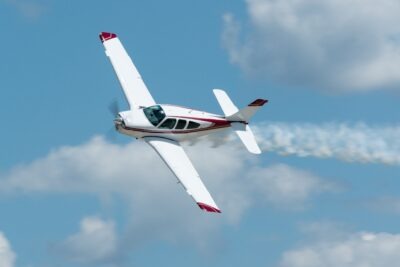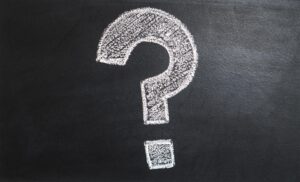
Liability in an aviation accident typically depends on factors such as negligence, responsibility for maintenance, or operational errors, determining whether airlines, manufacturers, or other parties are held accountable.
Aviation accidents can stem from various factors, predominantly flying errors, design flaws, maintenance lapses, and communication breakdowns. Survivors of aviation accidents may seek compensation for pain and suffering, lost wages, and current as well as anticipated medical expenses. Contact our Atlanta personal injury lawyers if you need help with your accident case.
Determining Liability
In the aftermath of an aviation accident, the process of assigning liability is crucial for establishing accountability and facilitating compensation for affected parties. So, who is liable in an aviation accident? Several factors are typically considered:
- Negligence: Whether the accident resulted from pilot error, air traffic control mistakes, or other human errors.
- Maintenance issues: Evaluation of maintenance records and procedures to determine if inadequate maintenance contributed to the accident.
- Design flaws: Examination of aircraft design and engineering to identify any inherent flaws that may have played a role.
- Regulatory compliance: Assessment of whether all relevant aviation regulations and safety protocols were followed.
Responsibility for an aviation accident can vary among parties such as airlines, aircraft manufacturers, maintenance contractors, and regulatory authorities. Our team can analyze these factors to determine the extent of each party’s liability, ensuring that compensation covers damages, including medical expenses, loss of income, and emotional distress for survivors and their families.
Get the strong arm
How Can You Prove Liability in a Plane Crash With No Survivors?
Proving liability in an aviation accident where there are no survivors relies heavily on thorough investigative techniques and legal doctrines designed to address such situations. Aviation experts utilize several methods:
- Flight data and cockpit recorders: Airliners and many charter aircraft are equipped with flight data recorders and cockpit voice recorders, which provide critical information about the aircraft’s performance and crew communications leading up to the crash.
- Radar data and wreckage examination: Radar data and meticulous examination of the wreckage are essential in reconstructing the sequence of events and identifying potential causes of the accident.
What Happens if Identifying the Crash Cause Is Exceptionally Challenging?
In cases where establishing the precise cause of the crash is exceptionally challenging, if not impossible, due to the absence of survivors, legal principles like res ipsa loquitur come into play. This doctrine allows plaintiffs to establish negligence under certain conditions:
- The accident is of a type that typically does not occur without someone’s negligence.
- The accident or injury was caused by an instrumentality under the defendant’s exclusive control.
- The accident or injury was not due to any voluntary action or contribution by the plaintiff.
Therefore, in nearly every aviation case involving parties other than the pilot or co-pilot, the occurrence of an airplane crash typically triggers a presumption of negligence under res ipsa loquitur, facilitating the legal process for establishing liability.
Filing a Lawsuit After an Aviation Accident
Filing a lawsuit following an aviation crash is a complex and critical process, requiring careful navigation of legal procedures and considerations. Here’s a step-by-step outline to guide you through:
- Consultation with legal representatives: Begin by seeking consultation with experienced aviation accident attorneys. They can provide crucial insights into the viability of your case, assess potential liability, and outline your legal options.
- Gathering evidence: Collect all relevant documentation, including medical records, eyewitness accounts, and any communication with aviation authorities or insurance companies. This evidence will support your claims and strengthen your case in court.
- Statute of limitations: Be mindful of the statute of limitations, which dictates the timeframe within which a lawsuit must be filed. Missing this deadline can result in the inability to pursue legal action.
- Preparing the complaint: Your attorney will draft and file a formal complaint detailing the facts of the accident, the extent of damages incurred, and the basis for holding the responsible parties accountable.
- Discovery phase: During discovery, both sides exchange information and evidence related to the case. This phase helps clarify facts and positions, potentially leading to settlement negotiations or trial preparation.
For comprehensive legal guidance and support in navigating the aftermath of an aviation accident, contact John Foy & Associates. Our team of dedicated attorneys is knowledgeable in aviation law and is committed to securing the compensation and justice you deserve. Our testimonials speak for themselves.
Contact John Foy & Associates if You Need Help Determining Liability in an Aviation Accident
Determining liability in an aviation accident is a multifaceted process that hinges on meticulous investigation and analysis of various factors such as human error, maintenance practices, design flaws, and regulatory compliance. The complexity often involves multiple parties, including airlines, aircraft manufacturers, maintenance providers, and regulatory authorities, each potentially sharing responsibility based on their roles and contributions to the accident.
If you or a loved one has been in an aviation accident, don’t wait to get the legal help you deserve. John Foy & Associates can build a strong case on your behalf and increase your chances of gaining financial compensation. Let us get you the results you need.
404-400-4000 or complete a Free Case Evaluation form





